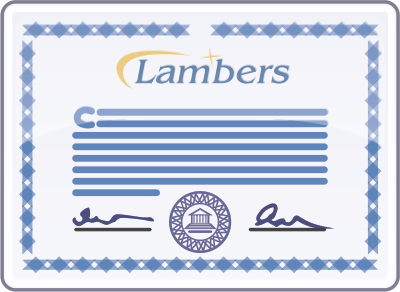The series requirements for a Certificate in Financial Reporting & Analysis consists of 11 separate video-based courses, worth 28 CPE credits and designed to show you how financial statements can be used to make better business decisions through thoughtful evaluation of a firm’s financial performance and condition as well as highlighting the factors that drive business success. The course coverage begins with an introduction to financial reporting and the economic environment in which financial statements are prepared and used. Course 2 provides a review of the mechanics underlying the preparation of the statements, and then the heart of the series, How to Read and Analyze Financial Statements, covers the statements in detail and goes on to develop a financial model that links the financial statements to business performance. Together, these 3 courses provide the foundation and perspective for the remaining courses, which drill deeper into the concept of net present value, and offer greater detail of the asset, liability, and equity accounts. Also included is a course on “Ethics and Earnings Management.” The entire series relies heavily on real-world companies and examples. After completing this series, you will not only be able to better prepare financial statements, but you will also have mastered the ability to use them as a tool to make better business decisions.
This full 11 course series is only:
Only $499!
Courses included are:
- Introduction to the financial statements and the environment of financial reporting
- Preparing financial statements
- Reading and analyzing financial statements
- Time value of money – Concepts and Applications
- Classification, Debt and Equity
- Current assets and asset valuation
- Equity Investments and Long-lived Assets
- Earnings Management
- Ethics and Earnings Management
- Firm Valuation and ROE Analysis
- Preparing and Analyzing the Statement of Cash Flows
VIEW OBJECTIVES
Financial Reporting and Analysis Series
(Course Objectives)
Introduction to the financial statements and the environment of financial reporting
- Describe why financial statements are important and how they are used
- Describe the four financial statements and explain how they differ.
- List the 5 basic questions, in order, that cover the concepts measured by the financial statements.
- Use actual dollar values from actual financial statements to answer the 5 basic questions.
- Describe the economic forces that influence the preparation, use and analysis of the financial statements.
- Define the concept of corporate governance and how it relates to the financial statements.
- Describe the key areas of running a business and how they relate to how capital flows through the business.
- Link the key areas of running a business and their results to the financial statements.
Preparing financial statements
- After completing the course you should be able to:
- State the basic accounting equation and explain how it relates to the financial statements.
- Apply the basic accounting equation to transactions that lead to a simple balance sheet.
- Apply the basic accounting equation to transactions that lead to a complete set of financial statements.
- Describe the structure and role of journal entries and ledgers.
- Use journal entries and ledger accounts to prepare a simple balance sheet.
- Use journal entries and ledgers accounts to prepare a complete set of financial statements.
- Explain how closing entries transition the financial statements from one period to the next.
- Define contra accounts and the role they play on the financial statements.
- Define treasury stock and describe where it can be found on the financial statements.
- Demonstrate how the sale of non-inventory assets affects the financial statements.
- Discuss and illustrate the difference between the accrual-basis and cash basis of accounting.
- Demonstrate using several examples how net income on the income statement can be reconciled with net cash from operating activities on the statement of cash flows.
Reading and analyzing financial statements
- Explain what a balance sheet measures and describe the basic balance sheet classifications and accounts.
- Explain what an income statement measures and describe the basic classifications and line items.
- Explain what the statement of cash flows measures and describe the three basic classifications, especially the operating section prepared under the indirect method.
- Explain what the statement of shareholders’ equity measures and describe the different accounts that appear on it.
- Assess Home Depot’s financial condition and performance by reviewing its financial statements.
- Describe the key areas of business performance and link them to the measures provided by the financial statements.
- List, compute and interpret a set of ratios that link to the key areas of business performance.
- Analyze the differences in the financial condition and performance of Home Depot vs. Lowe’s using a set of financial ratios.
- Explain how return on equity can be broken down into its determinants and link this model to the measures of the key areas of business performance.
- Analyze the differences in the financial condition and performance of Home Depot vs. Lowe’s using the ROE model.
Time value of money – Concepts and Applications
- Define the concept of time value of money.
- Explain how to compute the future value of a variety of cash flows.
- Explain how to compute the present value of a variety of cash flows.
- Explain how to compute the internal rate of return of a variety of cash flows.
- Demonstrate how the concept of time value of money is applied to various savings plans and the valuation of assets and liabilities on the balance sheet.
Classification, Debt and Equity
- Describe the key measurement issues addressed by the financial statements and explain how the current classification is used.
- Define the concept of a contingent liability and explain how contingencies are accounted for.
- Define what a bond is and explain how bond issuances are accounted for using the effective interest method.
- Explain how the effective interest method is used to account for bond investments and describe how management’s intention determines how changes in bond market values are accounted for.
- Describe the difference between short-term and long-term (financing and operating) leases and how both kinds of leases are reflected on the financial statements of the lessee.
- Summarize the shareholders’ equity section of the balance sheet and describe the transactions leading to each line item within that section.
Current assets and asset valuation
- Describe how receivables appear on the balance sheet and explain how bad debts are accounted for.
- List and describe the four basic issues involved in accounting for merchandise inventory.
- Differentiate raw materials, work in process and finished goods, and explain how costs are attached to the inventory account as products move through the manufacturing process and are eventually sold.
- List and define the three primary inventory cost flow assumptions and how they affect both the balance sheet and the income statement.
- List and describe the basic asset valuation approaches and explain how each approach affects the financial statements.
Equity Investments and Long-lived Assets
- Differentiate the market value method from the equity method and describe the conditions under which each is used.
- Briefly describe the fundamental issues involved when one company acquires a controlling interest in another company and explain how goodwill appears on the financial statements and is subsequently accounted for.
- List and describe the major issues involved when accounting for long-lived assets and briefly explain how the accounting methods for each issue affect the financial statements.
Earnings Management
- Define earnings management.
- Differentiate between real earnings management and accruals earnings management.
- Identify the four general areas where accruals earnings management is practiced and be able to recognize examples of each.
- Explain why earnings management is practiced.
- List and identify the popular strategies used by companies to practice earnings management.
Ethics and Earnings Management
- Describe the major elements of the accounting professional code of ethics.
- Define earnings management and link it to the elements of the code of ethics.
- Explain why earnings management is practiced.
- List and describe the two basic forms of earnings management: real and reporting.
- Identify common situations when earnings management is practiced.
Firm Valuation and ROE Analysis
- Use the concept of interest and time value of money.
- Define value creation.
- Link value creation to return on equity and how it is affected by management’s operating, investing, and financing decisions.
- Use a spreadsheet-based valuation model using ROE inputs.
- Compute the inherent value of Best Buy.
- Describe how this valuation framework should be interpreted and used, which includes conducting sensitivity analysis on the model’s key inputs.
Preparing and Analyzing the Statement of Cash Flows
- Prepare a statement of cash flows under both the direct and indirect formats from two balance sheets and an income statement.
- Identify the key elements of cash flow analysis and how they relate to each other.
- Identify various cash flow profiles and describe what these profiles mean concerning the firm’s cash management strategy.
- Read and thoughtfully analyze the statements of cash flow published by well-known companies from various industries.
Each of the above parts of the Lambers Financial Reporting & Analysis Certificate Series qualifies for IRS CE or NASBA CPE hours.



